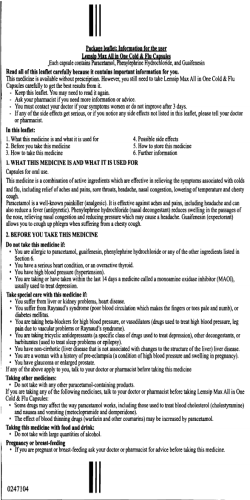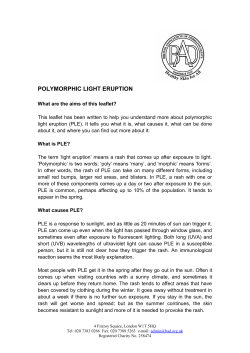
MYCOSIS FUNGOIDES
MYCOSIS FUNGOIDES What are the aims of this leaflet? This leaflet has been written to help you understand more about mycosis fungoides. It tells you what it is, what can be done about it, and where you can find out more about it. What is mycosis fungoides? The name mycosis fungoides is 200 years old and hints, quite wrongly, that it is some sort of fungal infection. In fact it is one of a group of conditions known as cutaneous T-cell lymphoma. A cutaneous T-cell lymphoma is an uncontrolled growth of the T-cell lymphocytes within the skin. (Lymphocytes are a type of white blood cell: they are found in the blood stream and organs, and help to protect us from infections. There are 2 types of lymphocytes: Bcells and T-cells). Mycosis fungoides is rare and for many affected people does not affect the quality of life or life expectancy. What causes mycosis fungoides? The cause is unknown. Mycosis fungoides can occur at any age but it is most common in the 40 to 60 year-old age group. You cannot catch it or pass it on to anyone else. Is mycosis fungoides hereditary? No. What are the symptoms of mycosis fungoides? Mycosis fungoides confines itself to the skin and only rarely affects other parts 4 Fitzroy Square, London W1T 5HQ Tel: 020 7383 0266 Fax: 020 7388 5263 e-mail: admin@bad.org.uk Registered Charity No. 258474 of the body. Apart from the appearance of the rash, mycosis fungoides often has no symptoms, but may be itchy at times. What does mycosis fungoides look like? The skin changes develop slowly, often over many years. At first they appear as irregularly-shaped, dry patches. It may be hard to make a diagnosis of mycosis fungoides at this stage, as early mycosis fungoides can look like common skin conditions such as eczema or psoriasis. Later, the patches may thicken (when they are called ‘plaques’), and occasionally the skin becomes red all over (erythroderma). In many cases, mycosis fungoides does not get beyond the stage of patches and plaques. Rarely, in a few people, the skin patches may become very thick and even form tumors or ulcers. These areas may be painful and discharge fluid. In only about one case in ten does mycosis fungoides affect the internal organs. How will it be diagnosed? Unfortunately it often takes up to several years before a reliable diagnosis of mycosis fungoides can be made. Up to that time the rash may not have any specific features. A skin biopsy is usually required to confirm the diagnosis, but this may have to be repeated before the diagnosis can be made firmly. Blood tests are often normal. Can it be cured? No. There is no guarantee that treatment will cure mycosis fungoides completely, but often it puts it into remission. Even after adequate treatment, the condition may continue for years if not decades. How can it be treated? Local treatments are all that are needed for early mycosis fungoides. They include the following: A good skin care regime, with the regular use of moisturisers, will help to prevent dryness and irritation. Your doctor may prescribe steroid creams or ointments and this may be the only treatment needed. These steroid preparations are safe to use when applied correctly, as advised by your doctor or nurses at the 4 Fitzroy Square, London W1T 5HQ Tel: 020 7383 0266 Fax: 020 7388 5263 e-mail: admin@bad.org.uk Registered Charity No. 258474 dermatology department. Topical retinoids, e.g. bexarotene gel, has also been used in some patients. Other treatments. If widespread areas are affected, or if the symptoms are not controlled, then other treatments can be considered. Your dermatologist will discuss these with you. Phototherapy: either ultraviolet B or PUVA (see British Association of Dermatologists’ Patient Information Leaflet on Phototherapy). Radiotherapy: if large thickened patches occur, they can be treated with radiotherapy, using low voltage radiation or electron beams. This method is used to treat individual areas, in contrast to phototherapy, which treats the whole skin surface. Topically applied nitrogen mustard (see British Association of Dermatologists’ Patient Information Leaflet on Nitrogen mustard). Methotrexate tablets: used for more extensive lesions not responding to cream treatments (see British Association of Dermatologists’ Patient Information Leaflet on Methotrexate). Rarely, in more severe cases, other forms of treatment will be suggested to you by your doctor, these include oral retinoids, immunotherapy, photopheresis or even chemotherapy. In some instances, the management of the condition may be discussed by a panel of expert doctors (multidisciplinary team) who will suggest the best possible treatment. What can I do? Remember that mycosis fungoides affects individuals in different ways and that the information given above is generalised. If you want to know more about mycosis fungoides, please ask the consultant dermatologist supervising your care. No special diet is needed, and there need be no restrictions on your activities. Where can I get more information about mycosis fungoides? Links to patient support groups: Cutaneous Lymphoma Foundation Web: www.clfoundation.org Web links to detailed leaflets: www.dermnetnz.org/dna.CTCL/ctcl.html 4 Fitzroy Square, London W1T 5HQ Tel: 020 7383 0266 Fax: 020 7388 5263 e-mail: admin@bad.org.uk Registered Charity No. 258474 For details of source materials used please contact the Clinical Standards Unit (clinicalstandards@bad.org.uk). This leaflet aims to provide accurate information about the subject and is a consensus of the views held by representatives of the British Association of Dermatologists: its contents, however, may occasionally differ from the advice given to you by your doctor. This leaflet has been assessed for readability by the British Association of Dermatologists’ Patient Information Lay Review Panel BRITISH ASSOCIATION OF DERMATOLOGISTS PATIENT INFORMATION LEAFLET PRODUCED AUGUST 2004 UPDATED SEPTEMBER 2009, OCTOBER 2012 REVIEW DATE OCTOBER 2015 4 Fitzroy Square, London W1T 5HQ Tel: 020 7383 0266 Fax: 020 7388 5263 e-mail: admin@bad.org.uk Registered Charity No. 258474
© Copyright 2025












